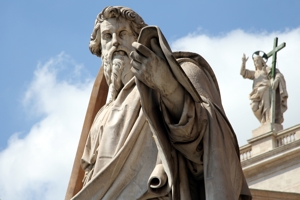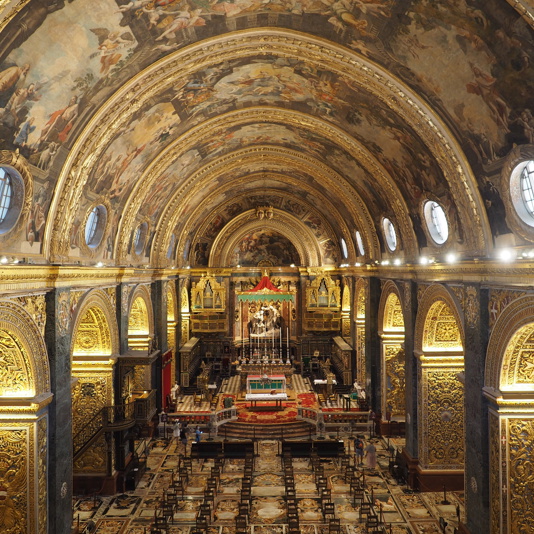Visit charming golden sandstone Valetta, the smallest capital city in European Union and a living open air museum. Built by Knights Hospitaller in the 16-th century for defense against the Ottomans and named after Jean Priscot de Valette, it strikes you with its special charm of ornate churches, bastions and fortifications, glorious palazzi, magnificent squares and shaded alleyways.
Architecture and Museums
Come see one of the most beautiful cathedrals you have ever seen – St. John’s Co-Cathedral. It might trick you with its rather humble exterior, but once you get inside your heart will miss a beat, as you will see the gold-plated interiors and amazing Baroque fresco paintings.
Come see the massive fortified inner and outer walls of this fortified capital and Valetta moat.
Enjoy tranquility of the green trees and amazing view of Manoel Island and the Lazaretto up on the city walls in Hastings Gardens and St. Michael’s bastion. Visit the monument at the sarcophagus of Francis Rawdon-Hastings, the governor of Malta in 1824-1826.
Count all the colors of signature Valetta balconies
Visit the Merchant’s Street with its cozy cafes and restaurants. Look down the Grand Harbour side of Valetta and see one of the most famous streets in Europe.
See one of the most marvelous church domes in the Basilica of St. Dominic.
Visit Grand Master’s Palace, which used to be the residence of the Grand Masters of the Knights of St John. Up until 2015 it used to be the residence of the Parliament of Malta. The Palace has an extensive collection of 5000+ armor suits.
Enjoy the peaceful shadowy atmosphere in the beautiful Upper Barakka Gardens near Castille Palace, the residence of Malta’s prime minister.
Discover the grand collection of arts in the National Museum of Fine Arts in Malta.
Activities
Take bus 52, 52 or 53 and head to the marvelous Mdina, a fortified city that used to be the capital of the island before Valetta.
Take a hike day and go to Dingli cliffs, Mellieha, Wardija or Fawwara. The best time for hiking is beween November and May as the island is covered with green grass and flowers.
Take a boat trip and explore local bays and coves. Relax and enjoy the breeze and amazing marine views.
Savor local specialties: torta tal-Lampuki, a pie with fried or baked lampuka fish (a small dorado) and spinach, olives and fresh herbs filling, and pastizz – a type of croissants with salty ricotta or mushed peas.
Shopping
Visit some of the many local independent shops. Many of them are specializing in silver and gold filigree jewelry made by the shop’s jeweler.
Look for local lace, blown glass and ceramics – the most famous souvenirs from Malta.
Beaches
The island has a plenty of different beaches to offer:
- Mellieha Bay in North Malta is the largest sandy beach on the island
Food, drinks and nightlife
Enjoy traditional Maltese kitchen at tiny Reno’s café or go to Merchant’s street and look for seafood stalls and pastizzi.
Try modern Maltese and Mediterranean kitchen at Rubino’s and L’Artiglio.
Enjoy breathtakingly beautiful views while enjoying the finest dishes of local cuisine at Rampilia or Gianni restaurants.
Enjoy live music while sipping wine at Bridge Bar, Maestro e Fresco or Sasha’s Bar & Bistro
Look for the hottest parties at Q Bar and Sky Club.
The heart of the Mediterranean, Malta had been a home for many different cultures and absorbed them all in: Phoenician, Arab, Norman, Spanish and British. Of course, this island is a home of many myths and legends. One of the most famous ones among the plenty are the legends about Apostle Paul. According to the Bible the saint was going to Rome to speak to Ceasar and his ship wrecked on a Maltese island. St Paul was safe and swam to the island and brought Christianity to Malta. This legend appears to have some substantiality, as Malta was one of the first colonies of Rome to convert from polytheism to Christianity.
Another famous legend is about St Paul and The Viper. Once upon a time St Paul was collecting firewood and a snake bit his hand. The snake was poisonous, and the local people were sure he would die. But St Paul was fine and healthy, so the locals believed that he was a man of God.


